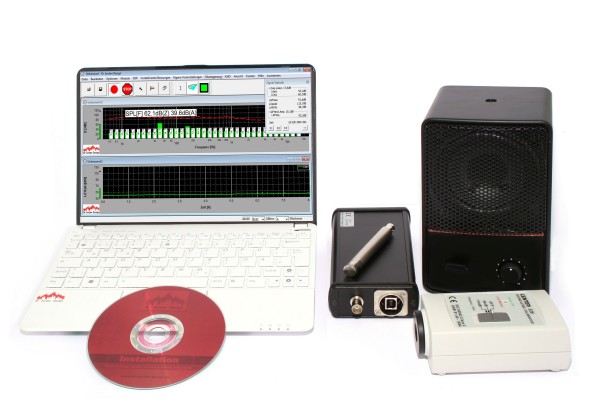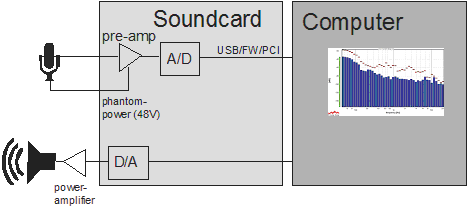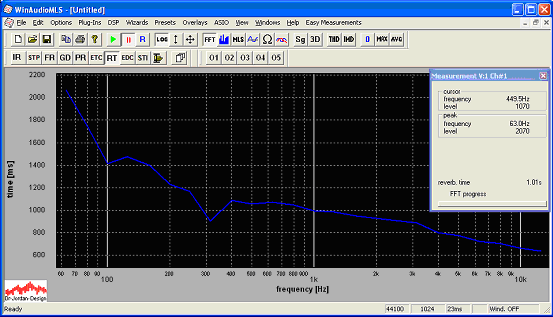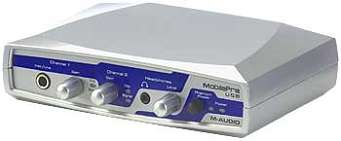Room Acoustics
Reverberation
Speech Intelligibility
The reverberation time is one of the most important parameters in room acoustics. This parameter indicates the time after the acoustic energy inside a room is below a certain threshold after switching off the sound source. RT60 is widely used, which is defined to be the time after the acoustic energy is below -60dB.
WinAudioMLS uses highly sophisticated measurement techniques like MLS and Chirp for measuring the reverberation time fast and reliable. With a laptop you can easily build a mobile system.

Schematic of this setup

In most cases the reverberation time is plotted versus the frequency with 1/3 octave resolution

Features
| Easy measurement with a wizard | |
| Measurements results can be stored in an automatic report | |
| Broadband calculation of reverberation time | |
| Optional 1/1 and 1/3 octave resolution | |
| Room impulse response measurement with MLS and LOG-Sweep (Chirp) | |
| Export and import of room impulse responses via .wav files | |
| Plot of energy decay curve (Schroeder plot) | |
| Configurable to measure RT60, RT30, EDT (Early Decay Time) and others | |
| Selection of average range directly at the Schroeder plot using mouse | |
| Can be extended to measure STI+RASTI+STIPA |
Components
To setup a complete system for room acoustics you will require the following components.
| WinAudioMLS plus reverberation plug-in | |
| Signalgenerator (PRO) | |
| Measurement microphone and pre-amplifier | |
| Suitable soundcard | |
| (Omnidirectional)-Loudspeaker with amplifier | |
| Tripod for the microphone | |
| Optional sound level calibrator |
Together with a PC/Laptop you will get a complete system.
For measurements of the reverberation time, a sound level calibrator is not required. But this unit with its reference level helps to identify and document e.g. noise sources. In addition, you can verify the measurement chain with one step.
With focus on mobile measurements we can recommend the following components
Soundcard
M-Audio mobile pre
This external soundcard is connected to a PC via USB and allows connecting measurement microphones with phantom power directly. These microphones cannot be connected to Laptops directly, because they usually offer a very simple microhone input without phantom power.

With LEDs you can easily monitor the signal level. This soundcard requires no driver and no external power supply. Installation and setup is very easy.
Measurement microphone
We recommend electrets-measurement microphones with XLR-connector and phantom power.

Loudspeaker and amplifier
For the measurement room parameters you will require a loudspeaker that is
able to radiate the excitation signal in all directions at high signal levels.
For high precision measurements, you should use a dodecaeder.
For most of the practical measurements 1-2 standard active loudspeakers are
sufficient. Although they are quite small (32 x 20 x 20cm 5kg), they reach sound
levels up to 113dB. With the built-in amplifier, transport and setup is simple.
You can use this system down to 100Hz. You can add a subwoofer for low frequencies.
Sound level calibrator
A sound level calibrator generates a reference tone of typically 1kHz at 94dB. This enables WinAudioMLS to measure absolute sound levels. Such a device is very useful for checking the complete measurement chain.

Tripod
We strongly recommend a tripod for simple and reproducible placement of microphones.
| Stable stand | |
| Height from 105 - 170 cm (41" to 70") adjustable | |
| Jib 75 cm |
